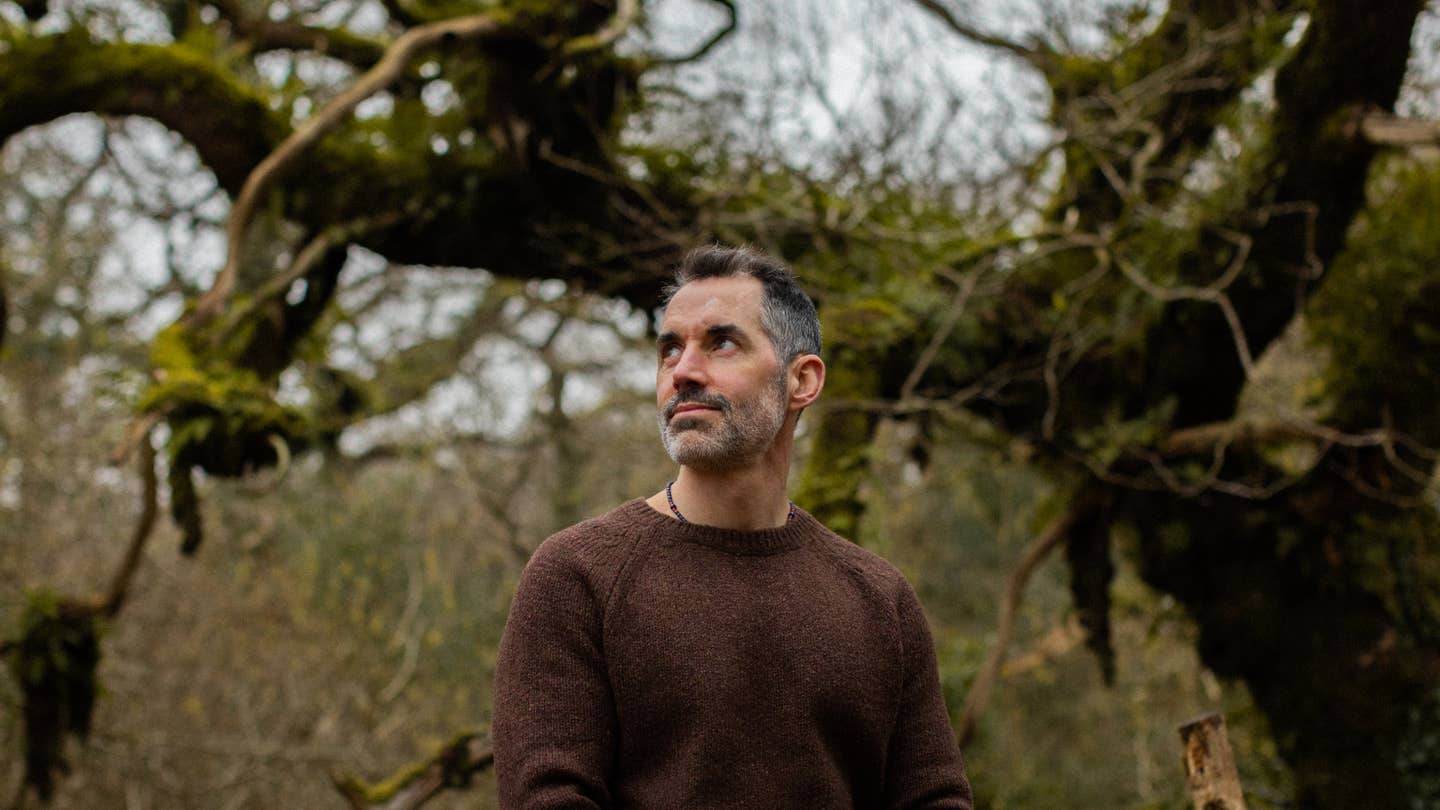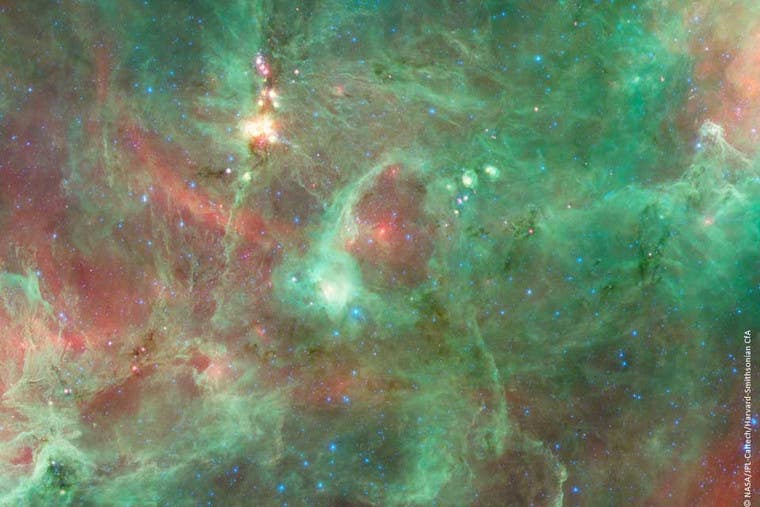Life may be reshaping our bodies and brains faster than evolution can handle
Scientists warn that modern environments outpace human biology, raising concerns about stress, fertility and long-term health.

 Edited By: Joseph Shavit
Edited By: Joseph Shavit

Colin Shaw and his Human Evolutionary EcoPhysiology research group investigate the effects of the environment on people’s health. (CREDIT: Thousand Year Trust)
For most of the past six million years, the human story played out in shifting woodlands, open plains and coastal zones shaped only by natural forces. Early ancestors adapted slowly to changing climates and landscapes, gaining the resilience that later helped modern humans settle almost every corner of the planet.
That long arc of adaptation produced bodies and minds built for sunlight, movement, unpredictable stresses and rich contact with the outdoors. Now you live in a world created in only a few generations, and scientists worry that the pace of change has left your biology struggling to keep up.
Industrialization has changed the land, water, and air at an unprecedented pace. Researchers assert that the rapid industrial change has placed you and your body into an evolutionary mismatch. That is, your body and brain still think as if the natural world were always present, when in the context of your day-to-day, it practically is not.
This is an important and urgent question. Are humans 'undermining' or are the changes to nature 'undermining' or 'inhibiting' your ability to be healthy, raise a family, and thrive?
The New Industrial Habitat
Today, cities shape and determine the lives of most people. In 2018, it was estimated that over half (54%) of the human population was living in urban areas that provide the entirety of life (housing, education, food, transportation, etc.), and very few people can or do live without the affordance of urban functions. Even individuals who live in rural environments are under the influence of urban development.
Microplastics are sweeping the Amazon rainforest. Artificial lighting is reducing the dark skies of the wilderness. In metropolitan areas such as Tokyo and Delhi, millions of people inhabit environments characterized by concrete, steel, and plastic. In the United States, Canada, the UK and New Zealand, many people spend roughly 93% of their day indoors.
These environments differ radically from the ecosystems to which your ancestors were adapted. For most of the time Homo sapiens have existed, tools were simple, food crops were wild or hand-grown, and stress came in short bursts whenever an immediate threat was present.
Natural materials bind daily life together. That changed approximately 12,000 years ago with agriculture, and again during the Industrial Revolution, when cities grew significantly in size and pollution began to fill the air. The acceleration of change continued with the Great Acceleration of the mid-20th Century when energy consumption rose, plastic infiltrated the world, and greenhouse gases extracted from the ground ascended sharply. By the end of 2020, the total mass made by humans was greater than the total living biomass on the planet.
When Biology Cannot Keep Up
Humans can change, but they change slowly over generations of time. In contrast, industrialization has changed everything in just eight or nine generations.
Scientists are now examining four important variables that people historically have relied on for biological survival to assess the extent to which we are managing. These variables include reproductive health, immune system strength, cognitive ability and physical fitness. These conditions have declined for each pillar in industrial settings.
Rising Pressures on Fertility
One of the most conspicuous global trends is the decline of fertility rates. Some of the decline can be attributed to social decisions, but environmental pressures are playing an increasing role. Disruption of sperm production, decreased egg quality and increased risk of pregnancy loss have all been linked to air pollution.
Between 1973 and 2018, sperm concentration more than halved globally. Pesticides and herbicides used in agriculture have been shown to reduce testosterone and increase the risk of birth defects. Microplastics have now been found throughout the human body and shown to damage reproductive cells and change metabolism and development.
Chemicals we interact with every day in consumer goods (phthalates and flame retardants) disrupt hormones responsible for reproduction. Scientists warn that these trends may indicate a gradual depletion of reproductive capacity.
Immune Function Under Pressure
Strong immune defenses have always supported survival. However, modern environments may compromise that shield. Large studies show that people living with less green space are more likely to experience infections of the lungs, gut, and urinary tract. Two primary forces drive this trend.
First, modern sanitation indoors limits your exposure to diverse microbes that once trained your immune system. This lack of exposure during the early years of life may lead to instability in immunity and an increase in allergic or autoimmune reactions.
Second, industrial stressors (air pollution, traffic noise, and artificial light) may compromise immune cells and interfere with circadian rhythms that guide the immune system's form and function. The cumulative impact of these pressures may lead to increased risk of infections, chronic inflammation, and even cancer.
Cognitive Demands of Urban Environments
Clear and well-functioning cognition has aided the survival of humans throughout time. Nevertheless, studies suggest urban environments disturb cognition. Children who grow up in less natural environments develop important cognitive skills more slowly.
Older adults who reside in greener areas exhibit less cognitive decline. Studies demonstrate that spending even a brief time in congested urban spaces negatively affects working memory, attention, and creativity, but a similar time spent in forests improves these domains.
Additionally, evidence shows air pollution negatively affects mathematical and verbal test performance and more rapidly accelerates cognitive decline in older people. On a related note, constant noise exposure and dense visual environments also place stress on the brain, making it difficult to sustain attention.
Declining Physical Capacity of Urbanites
Prior to the advent of agriculture, physical strength, stamina, and continuous movement were relied upon for survival. Today, many of us in our industrialized world are pushed into increasingly sedentary activities.
Urban children and adolescents often demonstrate lower cardiovascular fitness and less upper-body strength compared to peers from rural areas, as do urban adults compared to adults living on farms. Adults who reside in low-greenness landscapes lose grip strength more rapidly and preserve mobility less effectively as they age.
Air pollution exposure, such as ozone or carbon monoxide, even at what some governments regard as an acceptable level, can impede oxygen uptake, reduce athletic performance and make physical activity feel more strenuous.
The Cost of Chronic Stress
Chronic stress evokes some of the most serious worries. The same physiological systems that once stigmatized you and enhanced your chances to survive predators seem simply to react to traffic jams, work pressure, or social media notifications.
Colin Shaw (University of Zurich) and Daniel Longman (Loughborough University) are anthropologists and evolutionary biologists studying this evolutionary mismatch, have determined that your stress response just keeps firing, promulgating chronic stress. As Longman says, "really, the stress response system is still the same as if you’re facing lion after lion, whether it’s a difficult discussion with your boss or just the noise of traffic."
Over time, the sustained ultimate activation of the stress response disrupts reproductive pathways, weakens immunity to disease, dulls human thinking, and fatigues physical capacities.
Searching for a Better Fit
In conclusion, Shaw and Longman suggest that modern life has raced ahead of biological evolution. They interpret the increase in chronic disease, lower fertility and stress to the existence of homo sapiens in environments for which our species has not evolved.
Since biological change is slow, they argue society has to rethink how it utilizes space in cities, preserve green spaces and arrange daily activities. As Shaw points out, researchers can measure how some environmental variables in cities affect stress (e.g., blood pressure, heart rate); researchers already measure heart rate to assist city planners in creating healthy spaces.
Shaw further argues for communities to consider nature as a contributor to wellbeing and for new urban design that considers how the human body operates.
Implications of the Research
At the end of this work is a vision for a future where human health is achieved through the design of human-made environments.
The eventual understanding that modern life is mismatched with human biology may inform better public health decisions, mitigate chronic stress, and align policies with facilitating the protection of the natural environment and preserving or restoring natural spaces in urban centers.
Finally, this line of evidence may promote better access to areas with natural space and may help facilitate new concepts for planning urban environments that support sustained human health.
Research findings are available online in the journal Biological Reviews.
Related Stories
- Million-year-old skull discovery rewrites the story of human evolution
- New species of ancient humans rewrites the story of early human evolution
- Researchers reveal a surprising link between human evolution and cancer
Like these kind of feel good stories? Get The Brighter Side of News' newsletter.
Rebecca Shavit
Science & Technology Journalist | Innovation Storyteller
Based in Los Angeles, Rebecca Shavit is a dedicated science and technology journalist who writes for The Brighter Side of News, an online publication committed to highlighting positive and transformative stories from around the world. With a passion for uncovering groundbreaking discoveries and innovations, she brings to light the scientific advancements shaping a better future. Her reporting spans a wide range of topics, from cutting-edge medical breakthroughs and artificial intelligence to green technology and space exploration. With a keen ability to translate complex concepts into engaging and accessible stories, she makes science and innovation relatable to a broad audience.



